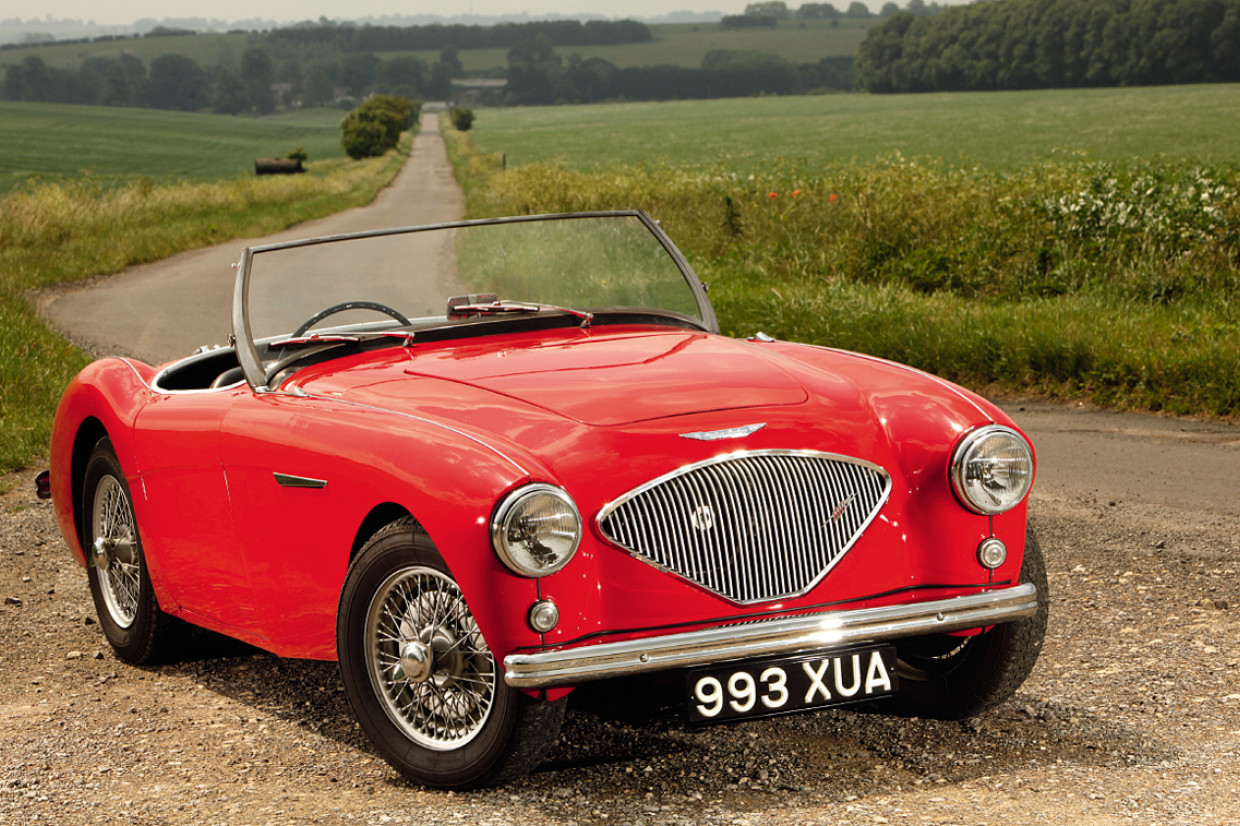
When Donald Healey launched the Austin-Healey 100 at the Earls Court Motor Show in 1952 he made sure to park it behind a large post, so unconvinced was he of the front end’s styling.
It wasn’t a problem for anyone else, though, and the light blue example on display was soon the star of the event. The punters were not the only ones that liked it either – legend has it that Leonard Lord of Austin took one look at the car and said: “we’ll make it”.
Historically, it wasn’t quite like that. Lord was already in negotiations with Healey Motor Co regarding the supply of parts, but it is quite possible that seeing the car ‘in the metal’ swung it for the Austin man.
Meanwhile, Healey, who had now got his head around the sales potential of his creation, knew that his small workforce in Warwick had no hope of matching supply with demand.
So, when the production agreement with Austin was announced, the Austin-Healey marque was born and a new badge conceived by Gerry Coker.

While Healey may have lacked absolute conviction when it came to styling, he knew how to sell cars, understood that the US would be his main market and that a competitive pedigree would help guarantee the new car’s success.






